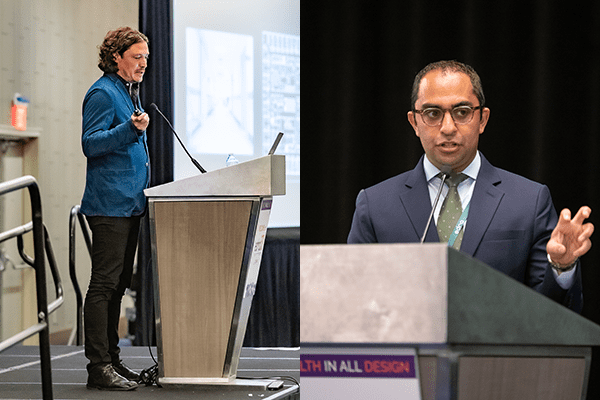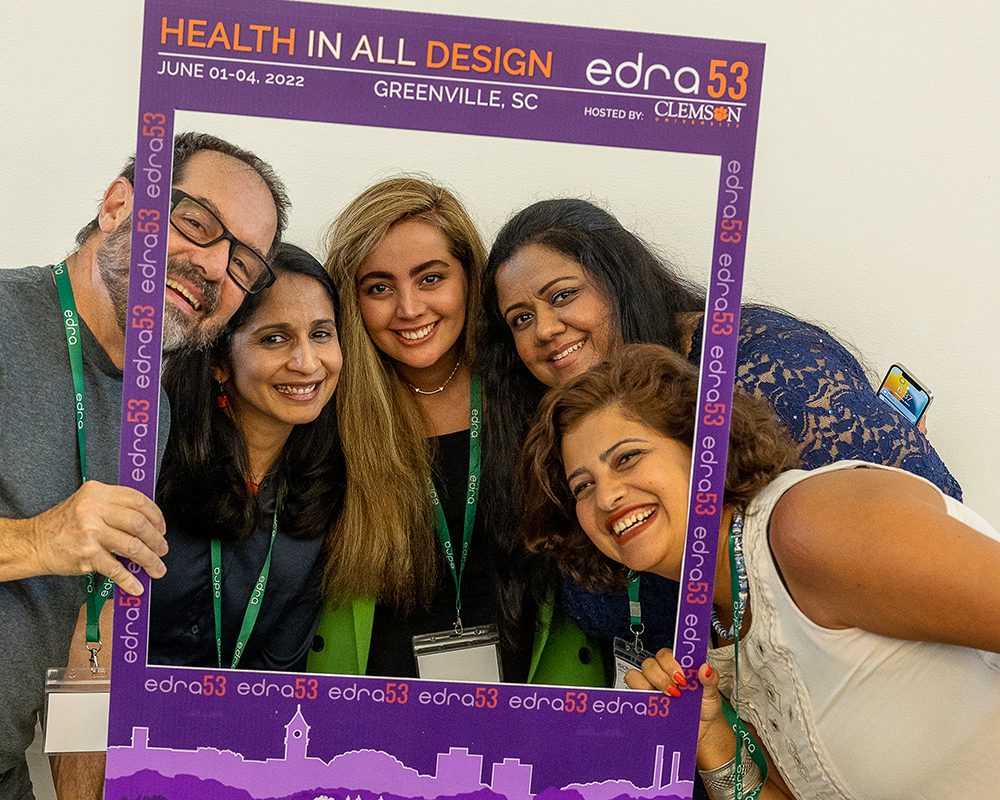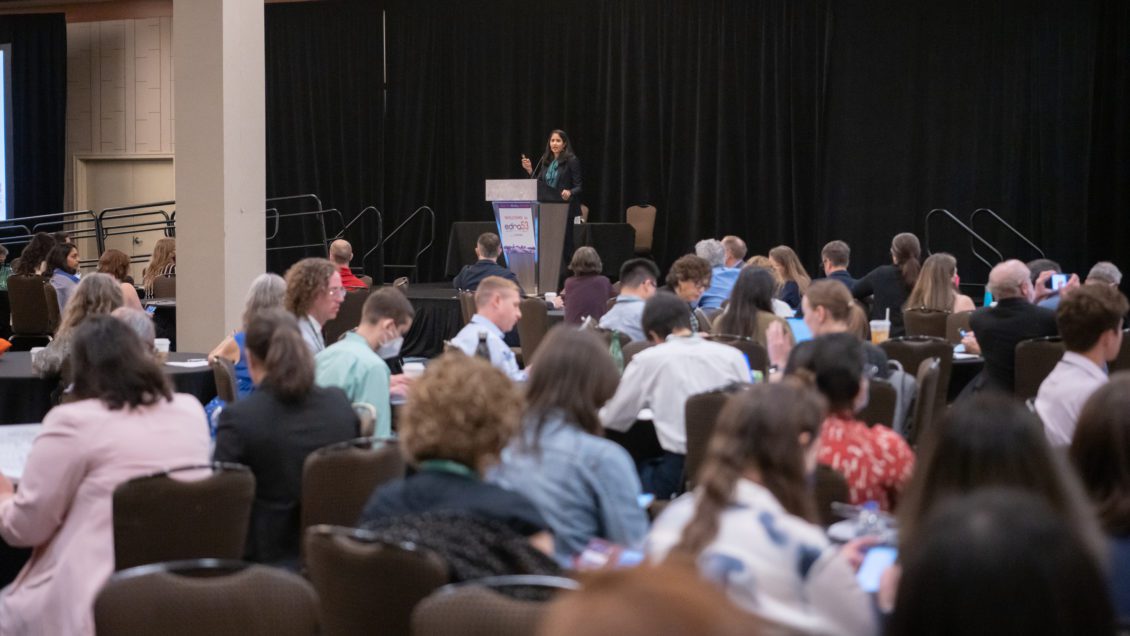The Clemson University School of Architecture welcomed architects and researchers from around the globe to the Upstate as it hosted the 53rd conference of the Environmental Design Research Association (EDRA).
Founded in 1968, EDRA’s mission is “to provide a collaborative, multidisciplinary community to connect theory, research, teaching, and practice to recognize, create and advocate for environments that are responsive to diverse human needs.” This year’s conference theme, “Health in All Design,” was a seamless fit for the event’s timing and location.
“The idea was that we could use this conference as a way of engaging all of the researchers and the practitioners in our field to talk about the role of health as a design goal as we emerge from this pandemic, and how we might integrate health into all environmental design projects moving forward,” said Anjali Joseph, director of the Center for Health Facilities Design and Testing at Clemson University, who organized the event along with fellow School of Architecture faculty members B.D. Wortham-Galvin, Dina Battisto and staff member, Lyn McCracken.
“In 53 years, this is the first time the conference has focused on health,” Joseph said. “This theme just made sense for a Clemson hosted conference, given the context of the pandemic and also our deep focus on health, sustainability and resilience within the Architecture + Health program and the Resilient Urban Design program at Clemson”
The conference kicked off on June 1 on Clemson’s campus at Lee Hall, showcasing the award-winning design of Lee III. Day two of the conference convened at the Hyatt Regency in downtown Greenville, where the approximately 425 attendees were greeted by Greenville mayor Knox White.
Well-known scholars and thought leaders Robin Guenther, Craig Zimring and Mike Lydon kicked off “Health in All Design” through a thought-provoking discussion about the key role that the physical environment (parks, homes and healthcare settings) played in promoting health and safety during the pandemic and the emerging issues related to the built environment that will need to be addressed in the design of all future environmental design projects.

In addition to hundreds of presentations available on a wide range of design topics, all attendees were invited to keynote presentations from Michael Murphy and Dr. Andrew Ibrahim. Murphy is a Founding Principal and Executive Director of MASS Design Group and winner of the Al Filipov Medal for Peace and Justice. His 2016 TED Talk, “Architecture that’s Built to Heal,” has reached more than a million viewers. Ibrahim is an assistant professor of surgery, architecture, and urban planning at the University of Michigan and Chief Medical Officer at HOK, a global design and architecture firm. His published research on the interface of healthcare, policy evaluation and architecture has earned him an appointment on the JAMA Network’s editorial board. In fact, Ibrahim coined the phrase, “Health in All Design.”
Closing plenary speakers Lynn Paxson, Rupa Valdez and Debarati “Mimi” Narayan Majumdar highlighted how disparities in health outcomes are impacted by the design of the physical environment and suggested ways forward to create environments that promote health equity.
The conference united practitioners and researchers from around the world and included representatives of the environmental design research community from the U.S., Canada, Germany, India, Japan, Qatar, South Korea, Switzerland and the United Kingdom.
“We were overwhelmed by this great event, the high-quality standard of the talks and the friendliness of all those involved,” said Minou Afzali, head of research at the Swiss Center for Design and Health.
“Partnering with Clemson to produce EDRA’s first in-person conference since the pandemic was a wonderful choice,” said Lindsay J. McCunn, EDRA board member and committee chair for the conference. “The feedback that I have received from a number of attendees has highlighted how welcoming and helpful the Clemson team members were at the event.”
“I should say having been to 46 EDRA conferences—and helped run two—that this was one of the best organized and run,” said Lynn Paxson, professor emeritus of architecture at Iowa State University.
The conference was supported by industry sponsors including HKS Architects, McMillan Pazdan Smith, Miller Knoll and Leo A. Daly. The event was also made possible by a grant from the Pennell Foundation and the Cecil Endowment.
Joseph credits the success of the conference to a team of contributors including her students at the Center for Health Facilities Design and Testing and in the School of Architecture, EDRA executive director Deni Ruggeri and EDRA board representative on the Conference Committee, Lindsay McCunn, and Amy Coli at The Conference Exchange. The support from the School of Architecture director Jim Stevens and Nicholas Vazsonyi, dean of the College of Architecture, Arts and Humanities was also critical to the event’s success.
“There were so many parts to this event that it could have been overwhelming for any of us, but together it was a great team effort,” Joseph said.

Get in touch and we will connect you with the author or another expert.
Or email us at news@clemson.edu

